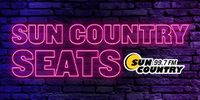The human brain is a most amazing organ, but it has proven to have some difficulty dealing with the force of a hard blow, or rapid acceleration or deceleration of the head, forces that are quite common in action sports.
Modern sports medicine is leading the way in learning more and more about the causes and the short and long term effects of brain trauma.
Okotoks' foremost sports trainer and physiotherapist, Neil Hergott has dedicated his life for more than three decades to the assesment and healing of all types of sports injuries, throughout all levels of competition, from amateur to Olympic, to professional.
Hergott explained that a concussion is a particularly difficult injury to deal with because a concussion is a chemical change in the injured portion of the brain, and cannot be detected by an MRI or a CAT scan.
Dealing with concussions properly, is especially important for children and youth, as their brains are not fully grown, and a full, adult set of neural pathways is still forming until approximately 18 years of age, when the formative process is mostly complete.
This is not to say that adult concussions are less important, but they present fewer complications and in most cases, a shorter recovery period.
In the modern treatment of concussions, Hergott says that although it is hard to attain, it is best to start the process at the beginning, before the activity begins, by establishing "Baseline Data" for each athlete, as a benchmark for what is normal proficiency for each individual.
There are a couple of modern misconceptions about brain trauma injuries, that the effects of repeated concussions are cumulative, and that better, more expensive equipment will reduce the incidence of injuries.
The factual truth is that there is little data to support the theory that each successive concussion will be worse than the previous one, when a proper and full recovery has been attained, according to the established "Baseline Data", and the athlete is symptom free before resuming the activity.
As for a better, more expensive piece of equipment, such as a more expensive helmet providing a concussion free environment for the athlete, Hergott uses the, "Egg in the box" analogy.
If you were to put a raw egg in a box, slightly larger than the egg, and shake the box violently, or drop it, the egg will break.
If you added thick padding to the outside of the box, and shook it and dropped it in a similar fashion to the unpadded box, the egg would still break!
In modern sports medicine the accepted protocol during a game when a head injury is suspected, is to remove the athlete from the scene, to a quiet place if possible, and administer a series of basic tests, for memory, coordination, balance, and discussing the presence of any symptoms, such as headaches, dizziness or blurred vision.
Should such testing reveal a possible concussion injury, the athlete is not allowed to return to the game and is monitored at regular short intervals to determine if symptoms may be worsening, which would indicate a more severe trauma, and emergency transport to a hospital would be ordered.
In all concussion cases, whether mild or severe, the athlete must seek the medical attention of a doctor, and finally be cleared to return to activity by a doctor, before being allowed to participate any further in the sport.
Hergott outlines the three most important factors to consider, to help with the reduction of brain trauma injuries, technique, rules, and respect.
By reducing the number of concussion injuries and dealing with the incidents that do happen in a professional manner, the underlying fear of long term disability and handicap can be minimized to allow more enjoyment of, and more fulfilling participation in competitive sports.
Here are two good websites for more detailed information on concussions and prevention, www.thinkfirst.ca and http://www.hockeycanada.ca/index.php/ci_id/66201/la_id/1.htm.










